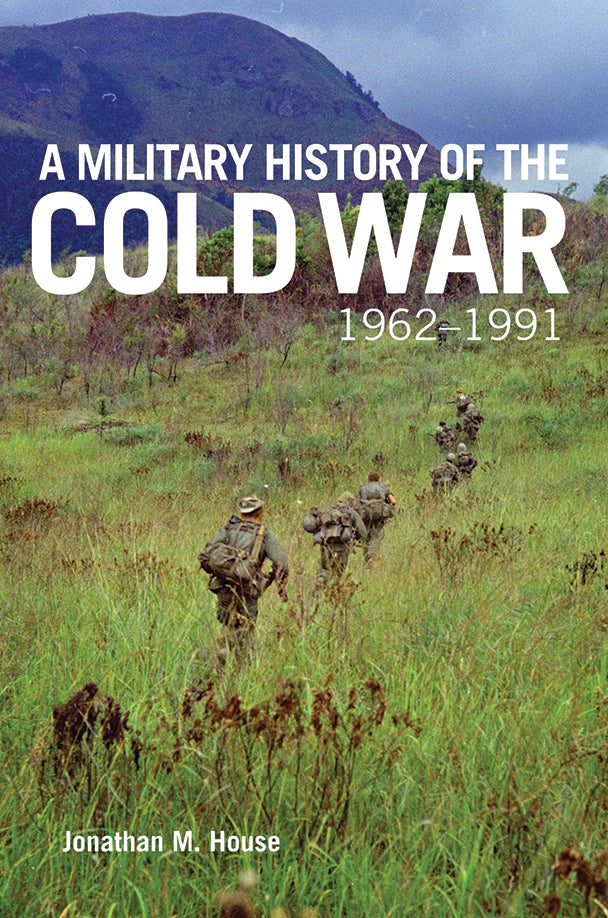April 2021 Book Reviews
April 2021 Book Reviews
Understanding the Team Builds Cohesion

How to Be an Inclusive Leader: Your Role in Creating Cultures of Belonging Where Everyone Can Thrive. Jennifer Brown. Berrett-Koehler Publishers. 168 pages. $19.95
By Maj. Gen. John Richardson IV
How to Be an Inclusive Leader: Your Role in Creating Cultures of Belonging Where Everyone Can Thrive is a must-read for Army leaders at every echelon. Assessing the environment at Fort Hood, Texas, last summer by actively listening to soldiers, one thing rang loud and clear: Junior enlisted soldiers didn’t trust their chain of command. This lack of trust between leader and led prevents us from building cohesive, combat-ready teams and is creating distance between the American people and their Army.
Fort Hood leadership executed bold and decisive action to attack this problem. We realized that we didn’t know our soldiers as well as we should, nor were we fully investing in them as valued members of the organization. To counter this, time was provided to leaders to get to know their soldiers.
As I circulated the installation to check on this initiative, I found squad leaders “under the oak tree” facilitating discussions among their squads and breaking down the barriers to allow trust to take root. One insightful soldier said to me, “Sir, our issue isn’t diversity; the Army accomplishes that through the assignment process. Our challenge is inclusion, and that takes work.”
Leaders in the Army must take on this adaptive work, and Jennifer Brown’s book How to Be an Inclusive Leader offers a step-by-step guide. Brown encourages leaders at all levels to take action and explains that every leader is at a different phase in their journey toward greater inclusion. She models this evolution as the “Inclusive Leader Continuum,” which consists of four phases: unaware, aware, active and advocate.
In the “unaware” phase, Brown asks leaders to “look inside yourself to uncover your blind spots, prejudices, and biases” to initiate some uncomfortable self-reflection. This will be difficult for many readers who will believe they already are inclusive leaders. Brown masterfully instructs leaders on techniques to identify and interrupt their biases by giving them the tools to become aware.
The transition to the “aware” phase happens as one begins focusing on understanding others. Brown urges leaders to further develop their empathy by explaining concepts such as privilege, and equity vs. equality. She details how to leverage feedback from underrepresented parties to address complicated workplace dynamics. Often, negative feedback leaves leaders feeling defensive and embarrassed. Instead, Brown urges us to demonstrate humility so we can recognize pertinent issues that were previously unidentified.
Once we have learned to become more aware, Brown coaches us on how to take action. She provides examples on how we can leverage our positions of authority and social capital to create a positive environment where employees feel like they can be their authentic selves. This involves amplifying minority voices, challenging enduring and archaic systems, and championing those whose voices are seldom heard. She complements this discussion by highlighting the importance of surrounding ourselves with teams that reflect our espoused values on inclusion.
Lastly, Brown challenges us all to be advocates for inclusion within our organizations. Advocacy goes beyond taking action on an individual level; leaders must make their support of inclusion public. Brown gives examples of advocating through mentorship for marginalized groups or pushing for policy change. She acknowledges that inherent risk increases as you become public as an advocate, but this risk is essential to producing an inclusive environment.
Brown makes it clear that if we want to show that inclusion is a priority, leaders must demonstrate that through continuous action and advocacy. As leaders, we must be willing to step out of our comfort zones, embrace humility, at times go against the norm and be adaptive in our pursuit of inclusion.
Maj. Gen. John Richardson IV has served as deputy commanding general of III Corps and Fort Hood, Texas, since August. Previously, he served as deputy chief of staff for operations, plans and training at the U.S. Army Forces Command. He has commanded at every level through brigade. He holds a master’s degree in counseling and leader development from Long Island University, New York.
* * *
Timely Tome Revisits U.S.-Soviet Standoff

A Military History of the Cold War, 1962–1991. Jonathan House. Oklahoma University Press. 468 pages. $50
By Col. J.P. Clark
It has been eight years since the publication of retired Col. Jonathan House’s military history of the early Cold War, which covered the years from 1944 to 1962. In this companion volume, A Military History of the Cold War, 1962–1991, House finishes the tale, accounting for virtually all the military conflicts of note through the fall of the Soviet Union.
House casts a wide net. Naturally, there are comprehensive accounts of the military activities of the U.S. and the Soviet Union, from major conflicts like Vietnam and Afghanistan through smaller interventions of special operations, advisers and materiel support such as the civil war in El Salvador and the Arab-Israeli wars. House even includes a chapter contrasting how different states sought to protect their populations through civil defense and control them in response to civil disturbances.
But House includes many other conflicts, such as the Indo-Pakistani wars, the Biafran War in Nigeria and the Iran-Iraq War, that otherwise might be overlooked. He persuasively justifies this expansive scope by detailing the many ways the U.S.-Soviet standoff influenced nearly all contemporary military activities to some extent. Beyond the obvious effects of the flood of military equipment provided by the contending blocs, the geopolitical context of the Cold War shaped many conflicts in more subtle ways as well; influencing how conflicts began, how they were fought and how they terminated.
House’s scholarship is excellent. The volume offers measured appraisals drawing on up-to-date sources detailing the action from both sides. This is the work of an accomplished historian. House is a professor emeritus of military history at the U.S. Army Command and General Staff College and the author of a number of acclaimed works, including some of the most comprehensive studies of the Eastern Front of World War II.
Military professionals seeking a broad understanding of military developments during the late Cold War will not find a better primer. This is a timely contribution as the U.S. returns to what many are calling a period of great-power conflict. House greatly expands on standard narratives of the Cold War condensed to a few well-known episodes of crisis and conflict to illustrate the complexities arising from the intersection of global rivalry with regional conflict.
Though House does not question the ultimate need for the U.S. to focus on its competition with the Soviet Union, he does note that at times, this led civilian and military leaders to misread local dynamics, support disreputable allies and take actions that still cause resentment, such as the 1973 coup against Chilean President Salvador Allende. A recurring theme is that both the U.S. and the Soviet Union assumed they had greater control over local actors, who often surprised the superpowers by acting in their own interests.
The ambitious scope of this account keeps House from lingering too long on any specific conflict. The reader must stay alert to keep up with a long series of complex conflicts, each distilled to just a few pages. The operational-level focus gives an excellent overview of what happened but only necessarily brief glimpses of why events unfolded as they did due to matters such as tactics, logistics, weapons technology and organizational culture. The volume is also analytically detached in that there is little discussion of the human experience.
Fortunately, the endnotes in Military History of the Cold War provide an excellent starting point for readers who want to delve deeper.
Col. J.P. Clark is an Army strategist. He has a doctorate in history from Duke University, North Carolina. He is the author of Preparing for War: The Emergence of the Modern U.S. Army, 1815–1917.
* * *
Deep Bench of Prime Leaders Won at Saratoga

The Compleat Victory: Saratoga and the American Revolution. Kevin Weddle. Oxford University Press. 544 pages. $34.95
By Lt. Col. (P) Seanegan Sculley
Most scholars agree that the American victory at Saratoga, New York, in the fall of 1777 opened the path to a French alliance and made the Revolution a global conflict. More difficult to comprehend is why British strategy that year became so disorganized and how an American Army on the brink of disaster could achieve such success.
Kevin Weddle has waded into the fray to help us understand this historical problem by investigating the Saratoga campaign on three levels: strategic, operational and tactical. The resulting book, The Compleat Victory: Saratoga and the American Revolution, is the most comprehensive telling of the campaign to date.
In short, Weddle tells us that while historical contingency is important, British strategy ultimately laid the foundation for this monumental defeat. Lord George Germain, British secretary of state for the Colonies, micromanaged this strategy in a time when communications between London and the Colonies often took weeks, if not months, to arrive. The British commander in chief, Gen. William Howe, failed to coordinate his movements around Philadelphia with those of his subordinate, Gen. John Burgoyne, attacking south from Canada. And Burgoyne was simply out of his depth operationally, as he attempted to move an army hundreds of miles through mostly wilderness and without the proper planning to support his forces logistically.
But Weddle does not solely blame the British for this incredible outcome. His analysis found that the Americans benefited from a deep bench of excellent leaders. Despite the criticism received from other historians, Weddle found that Maj. Gen. Horatio Gates deftly used his administrative skills to strengthen the operational environment he inherited from his predecessor, Maj. Gen. Philip Schuyler, while both Maj. Gen. Benjamin Lincoln and Brig. Gen. John Stark provided the leadership needed to take advantage of the large number of militiamen who turned out in response to the British invasion.
Several regimental commanders were pivotal to success, including Col. Daniel Morgan, though the true hero of the campaign at the tactical level was then-Brig. Gen. Benedict Arnold, whose quick decisions at Freeman’s Farm and distinguished bravery at the Battle of Bemis Heights saved the day and led directly to the capitulation of the largest British force up to that point in the war.
And while Gen. George Washington was busy fighting Howe in Pennsylvania, his decisions to send reinforcements from the Continental Army and provide the political clout to convince New England states to raise large militia forces for support made all the difference.
What follows is possibly the most compelling history of the campaign yet written. Weddle successfully explains, for experts and generalists alike, how British strategy became so hopelessly flawed by May of 1777. His narratives of each of the important battles (Fort Ticonderoga, Bennington, Freeman’s Farm and Bemis Heights) are riveting. Yet he never loses sight of the bigger picture, taking care to show the reader where and when leaders could have made different decisions and why they chose not to do so.
Perhaps most important to the historiography of the campaign is Weddle’s analysis of the relationship between Gates and Arnold during the final battle of the campaign at Bemis Heights. While previous histories suggest that Arnold had been relieved before the battle, Weddle uses overlooked accounts to show that Arnold was still in command and acted on Gates’ orders. If accurate—and his evidence is compelling—our understanding of Arnold’s role on that day has been flawed for over 200 years.
The Compleat Victory is an important new history of the most important campaign in America’s earliest military past and should be read by anyone interested in understanding how the U.S. Army was born.
Lt. Col. (P) Seanegan Sculley is an associate professor at the U.S. Military Academy at West Point, New York, teaching Colonial and frontier American history. He holds a doctorate in history from the University of Massachusetts Amherst.
* * *
A Primer on Overcoming the Status Quo

Twenty Years of Service: The Politics of Military Pension Policy and the Long Road to Reform. Brandon Archuleta. University Press of Kansas. 272 pages. $39.95
By Lt. Gen. Karen Dyson, U.S. Army retired
At a time of dynamic change throughout the Army, Twenty Years of Service: The Politics of Military Pension Policy and the Long Road to Reform shows how “status quo” policymaking can obstruct innovation.
This book is a fascinating walk through the history of slow change in the military pension system, which preserved an industrial age policy for 70 years before the Blended Retirement System was finally introduced on Jan. 1, 2018.
The cost of staffing the force is a prominent portion of the Army’s budget: over 40% this fiscal year. Pensions have been an important component of an effective compensation strategy necessary to attract and retain America’s top talent into the Army. Today’s leaders must understand compensation strategy as it impacts the budget and affects every soldier, currently or formerly serving.
Author Brandon Archuleta, a major in the U.S. Army, readily establishes credibility through extensive, well-documented historical research and 60 interviews with key players across Congress, the Pentagon, veterans support organizations, scholars, journalists and service members.
These players have created multiple policy subsystems that work together to effect policy change. Employing case studies, Archuleta brings history to life in a clear, interesting way, educating the reader on a complex process that few understand.
Archuleta leverages the pension system to explore why policy change is so difficult and can take decades to achieve. Factors of organization, turnover of people, agents of power (as differentiated from agents of influence) and ineffective information-sharing combine to create barriers to change and support the status quo.
He describes the “missing-in-action” bureaucracy, highlighting how policy is driven by Congress and interest groups, then implemented by Pentagon “mezzo-level bureaucrats” who both force and enforce decisions.
Other important ingredients are crises that compel action and external blue-ribbon commissions, which can sometimes overcome resistance and bring reform.
Two notable pension changes include the GI Bill and the Blended Retirement System. Force downsizing following World War II changed a practice of cash paid to departing veterans to the GI Bill—helping enable “the greatest generation.”
In the 21st century, the Pentagon created the Blended Retirement System as a response to budget reductions, force restructuring and a war for talent.
The new system ended 20-year retirement vesting (where less time in service meant no retirement benefits) and created the 401(k)-like Thrift Savings Plan, a portable retirement benefit with matching government contributions, for all soldiers.
Where other policy changes failed between World War II and today, the author credits successful implementation of the Blended Retirement System to the Pentagon’s priorities for creating financial tools and education, allowing those currently serving to opt in or out, and progressive implementation.
Understanding how this successful policy change happened and was actualized is worthwhile knowledge for today’s leaders.
Archuleta concludes with recommendations for how to enact further reform to sustain the all-volunteer force. One recommendation is to create holistic talent management strategies; he credits the Army with already having taken important first steps toward this recommendation.
The most valuable takeaway is Archuleta’s explanation of how policies are created, approved, implemented and sustained. Anyone coming to the Pentagon for the first time would be well served by his on-target insights for how policymaking works, who drives the process and the important role of communication.
This book will prepare readers to overcome the status quo in any ongoing policy process.
Lt. Gen. Karen Dyson, U.S. Army retired, is a director on the boards of an information technology solutions company and two financial services companies. Previously, she served as military deputy to the assistant secretary of the Army for financial management and comptroller.

